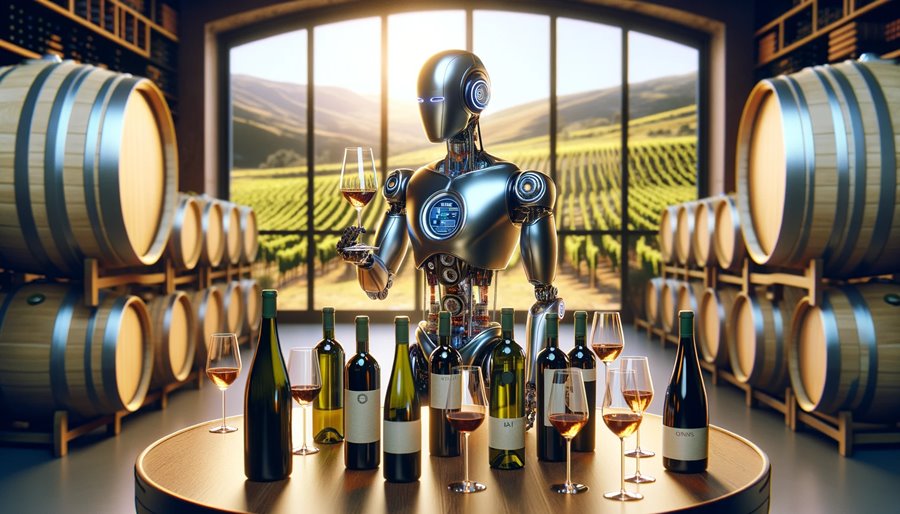An artificial intelligence tastes 80 wines and recognizes its cellar 100% of the time
In addition, the AI is able to identify the vintage of the wine 50% of the time
2023-12-26

The world of wine, steeped in tradition and sensory experience, is witnessing a technological revolution that intertwines the art of winemaking with the precision of science. A recent study spearheaded by Alexandre Pouget, a computational neuroscientist at the University of Geneva, and Stéphanie Marchand of the Institute of Vine and Wine Science (ISVV) at the Université de Bordeaux, has marked a significant milestone in the exploration of wine's provenance and complexity.
Alexandre Pouget's longstanding fascination with wine, rooted in his Parisian upbringing, found a unique expression in his professional journey as a neuroscientist. The idea of applying machine learning, a facet of artificial intelligence that he utilized in brain studies, to the realm of oenology, lingered with him. This curiosity was reignited during a visit to Veuve Clicquot, leading to a collaboration with ISVV and the initiation of a groundbreaking project.
The study employed gas chromatography and electron ionization mass spectrometry, coupled with machine learning, to analyze the molecular signatures of wines. This approach aimed to identify specific wines and their vintages based on their chemical profiles. Gas chromatography, a long-standing method in wine analysis, vaporizes wine samples to record their molecular components. The vast data sets generated were then interpreted using machine learning algorithms, enhancing the speed and accuracy of analysis while minimizing human biases in data interpretation.
The team's research, involving 80 wines from seven classified-growth estates in Bordeaux, yielded astonishing results. The machine learning algorithm, trained with the chromatograms of 73 wines, demonstrated a 100% success rate in identifying the producing estate and a 50% accuracy in determining the vintage. This achievement not only highlighted the distinct chemical identities of wines from different estates but also underscored the potential of machine learning in enhancing our understanding of wine chemistry.
A significant revelation emerged when the chemical fingerprints of the wines were converted into XY coordinates and mapped. This visualization strikingly clustered wines from the same estate, regardless of vintage, and distinguished between the Left and Right Bank origins of Bordeaux wines. This observation vividly illustrated the chemical similarities among geographically proximate wines, providing a compelling validation of the terroir concept.
The implications of this study extend beyond academic curiosity. In the battle against wine counterfeiting, such precise identification techniques could prove invaluable. Additionally, as the wine industry grapples with the challenges posed by climate change, this technology could assist winemakers in preserving the unique identity of their wines amidst evolving environmental conditions.
Marchand and Pouget's research is now expanding to include other varietals like Pinot Noir and Syrah, and to incorporate wines from more modest estates. This expansion not only broadens the research's scope but also enhances its relevance to a wider spectrum of the wine industry.
This journey, initiated by Pouget's quest to apply machine learning to his passion for wine, has evolved into a pioneering study that blurs the lines between technology and tradition. As the team delves deeper into the potential applications of their findings, the wine world eagerly anticipates the ways in which this fusion of science and sensibility will continue to enrich our understanding and appreciation of wine.
Founded in 2007, Vinetur® is a registered trademark of VGSC S.L. with a long history in the wine industry.
VGSC, S.L. with VAT number B70255591 is a spanish company legally registered in the Commercial Register of the city of Santiago de Compostela, with registration number: Bulletin 181, Reference 356049 in Volume 13, Page 107, Section 6, Sheet 45028, Entry 2.
Email: [email protected]
Headquarters and offices located in Vilagarcia de Arousa, Spain.